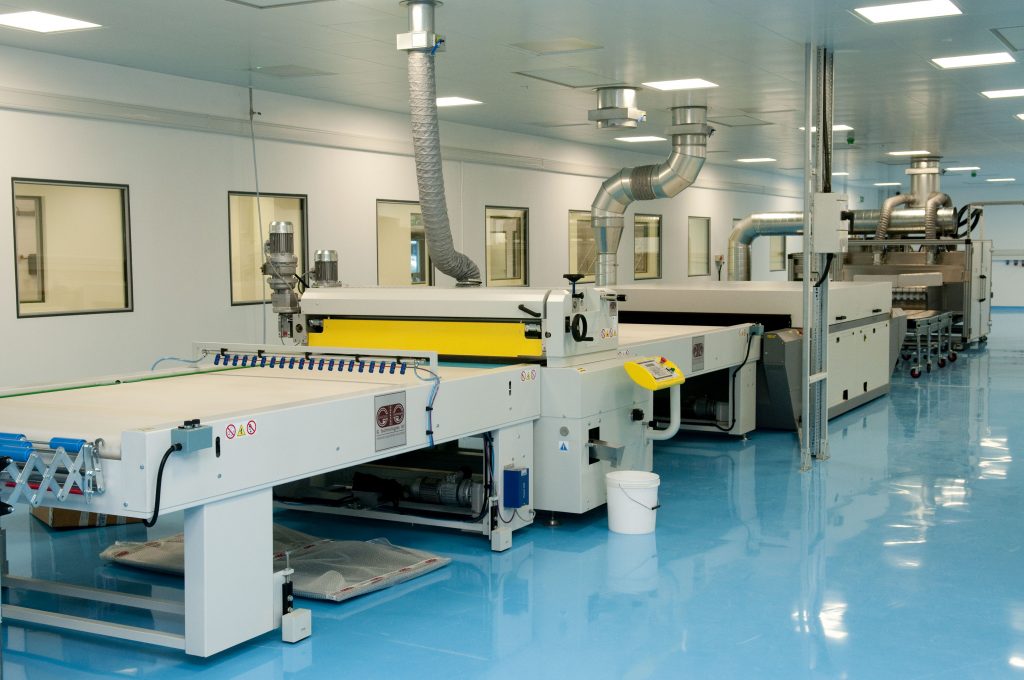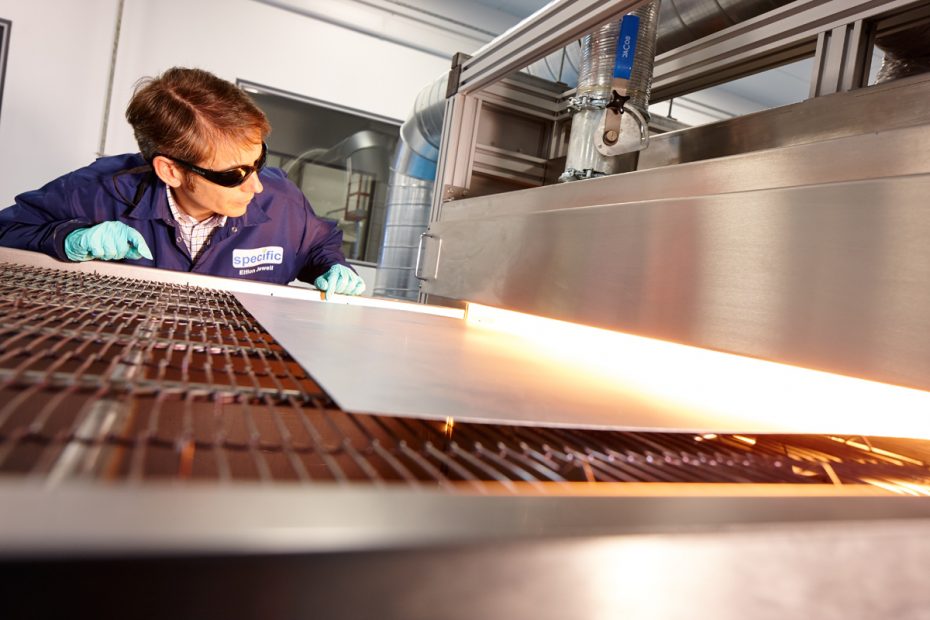Our Industrial Coatings group works on lab-scale testing all the way through to larger scale building panels. The research lead, Dr Eifion Jewell, tells us about their current work and what’s next for the group…
What type of research is being undertaken by SPECIFIC’s Industrial Coatings group?
In basic terms, our work has two primary strands:
– Developing ways of putting a liquid on a substrate
– Working out how to prolong its lifetime
There are a number of things that make the group’s work unique. We can deposit just about any liquid to any substrate at scale (many m2 and speeds of tens of m/min) and cure it using a wide variety of techniques. As we are predominately dealing with buildings, we must ensure that – once deposited and cured – the coating remains in perfect condition for an excess of 25 years.
We have a range of testing techniques available to us that examine all the major failure mechanisms, from corrosion to colour fading. The combined expertise and equipment capability means that we can start with a basic formulation and follow every step through to lifetime predictions and large panels on buildings.
Does the research target one, defined goal?
The overall ambition of the work is similar: deposit a defect-free coating with minimal carbon and cost input at an industrial scale that will last the lifetime of the building. In reality, this grand ambition is pursued by smaller, individual projects. At a lab scale, we examine the impact of small formulation alters in the coating process, as well as its performance. On a larger scale, we evaluate whether we can use alternative sources of curing energy to cure paint at industrial speeds and scales.
This has the potential to significantly reduce the overall carbon input. Our role in this instance is to understand the curing mechanism and develop recommendations for industrial applications. In this, we de-risk any investment in new plant and can be confident that the product quality is maintained or enhanced. We also carry out a more “blue sky” approach to development at the research frontier, which is more speculative but broader in its vision.

What are you working on that is at the research frontier?
One example is out work with next generation building diagnostics using local radio frequency signals to check for local defects without contacting the substrate. The initial experiments are encouraging and we are aiming to prove its sensitivity in the lab. In principle, we could fly a drone across the fascia of a building and measure any defects that may be occurring before they become visible. If required, a judgement would then be made on a planned, remedial action. This is a little bit ‘Star Trek’, but we believe that it is possible and may be part of a maintenance service in the future.
Does the work link to any other research groups within SPECIFIC?
Absolutely, much of our work with the printing and coating processes is directly applicable to those depositing photovoltaic materials. The end function is different, but the generic constituents of the formulation and deposition process are similar. In many instances, our coated products are often the base substrate for PV panels, so they work together on their compatibility. Similarly, if the building envelope is used to gather energy for thermal storage then we must consider this increase in surface temperature as it generally has a detrimental impact on the paint robustness. Collaboration between the groups is fundamental, and we share best practice and learn novel techniques from one another.
Read more about the Industrial Coatings research undertaken here at SPECIFIC.
